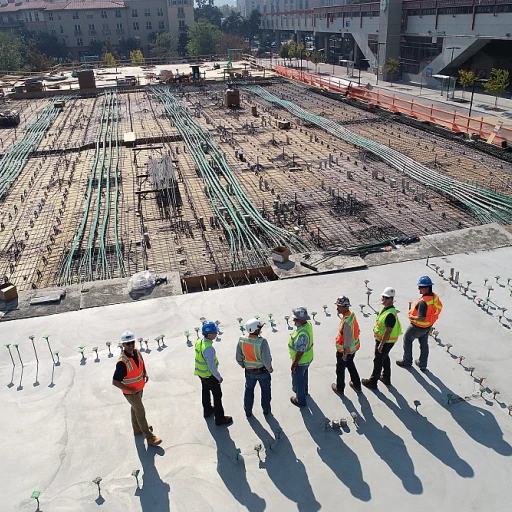Understanding Ageism in the Workplace
Exploring the Dynamics of Workplace Ageism
Ageism in the workplace represents a form of discrimination based on age, affecting both older and younger employees. Companies often unconsciously perpetuate stereotypes that undervalue the capabilities and potential of workers solely because of their age. Throughout the hiring process, these biases can lead employers to favor younger candidates, based on the misguided perception that they are more adaptable or technologically adept. This often neglects the vast experience and wisdom that older workers can contribute to a company. Conversely, younger workers may face assumptions about their inexperience or perceived lack of commitment. One significant challenge is shifting the mindset of employers to recognize and mitigate these age-based prejudices. By understanding the impact of age discrimination, organizations can harness the diverse perspectives and strengths that employees of all ages bring to the table. Although employment law provides some protection against such bias, there's a pressing need for increased awareness and active measures within businesses to combat workplace ageism. For more insights into understanding the metrics of hiring experience, explore our comprehensive guide. Implementing strategic actions to evaluate these metrics is crucial in promoting a fairer environment during the hiring journey.Common Examples of Ageism During Hiring
Recognizing Common Instances of Age Discrimination in Hiring
Ageism in the hiring process can manifest in various subtle but impactful ways, often targeting both ends of the age spectrum. Understanding these examples of age-based discrimination can help individuals identify these practices and strategize effectively against them.- Preference for "Youthful" Traits: Job postings often encourage applications from "energetic" or "dynamic" candidates. While not explicitly stating a preference for younger workers, such language indirectly suggests age bias and can discourage older professionals from applying.
- Technical Skills Assumptions: Employers sometimes assume that older employees lack familiarity with current technologies or media platforms, leading to biased judgments during screening or interview processes. This age bias can unjustly bar older adults from equal job opportunities even when they possess the required skills.
- Career Advancement Concerns: Some hold the misconception that younger employees are more adaptable and willing to grow with the company, expecting older workers to be less flexible or unwilling to pursue leadership roles. Such assumptions can deter companies from considering older candidates for positions that offer advancement.
- Inquiries About Age-Related Plans: During interviews, employers may ask about retirement plans or question how long older workers intend to remain in the workforce. These inquiries, although seemingly benign, can be an example of ageism that pressures older employees to justify their employment longevity.
- Stereotyping and Presumed Competency: There's a bias that younger workers bring fresh, innovative ideas compared to older employees who are often perceived as resistant to change. This stereotype can influence hiring decisions, overshadowing the actual competencies of the candidate.
Impact of Ageism on Different Age Groups
Consequences of Age-Based Discrimination
Ageism in the workplace affects employees across different age groups, leading to a variety of consequences that can hinder both personal and professional growth. While younger employees often face skepticism regarding their experience and capabilities, older employees encounter biases that question their adaptability and willingness to integrate into modern work environments. For older workers, ageism can manifest as a prevailing assumption that they are resistant to change or technologically inept. Such stereotypes may prevent them from being considered for positions for which they are fully qualified. This type of discrimination employment practice not only affects individual morale and job satisfaction but can also lead to a loss of valuable skills and institutional knowledge within a company. On the other hand, younger workers may struggle with age bias based on the misconception that their age equates to inexperience. This can result in them being overlooked for roles that require dynamic and innovative thinking, qualities they often possess. Discrimination employment may render them feeling undervalued, prompting early career pivots or exits from their current work environment. The impact of age discrimination extends beyond the individuals directly affected; it also influences the broader workplace climate. When age-based assumptions take root, they foster a work culture that stifles diversity, innovation, and inclusivity. Employees ages across the spectrum may find themselves working in environments that do not leverage the full potential of their combined talents. Employers must recognize that combatting ageism requires conscious effort and strategic actions to promote an age-diverse workplace. Failure to address these systemic issues can result in decreased employee engagement, increased turnover rates, and legal risks concerning compliance with age-discrimination laws. Understanding the challenges and impacts across different age groups is essential for implementing effective strategies and insights to effectively fill vacant roles within a company. By confronting and dismantling ageist practices, employers can cultivate an environment where all employees—regardless of age—feel valued and empowered to contribute to the company's success.Legal Framework and Protections Against Ageism
Understanding the Legal Protections Surrounding Age Discrimination
Recognizing ageism, especially in hiring practices, begins with understanding the legal framework designed to protect employees against discrimination based on age. Age discrimination has been a significant issue in the workplace, affecting both older and younger workers alike.The Age Discrimination in Employment Act (ADEA) is a pivotal law established to prevent age-based discrimination, particularly for employees aged 40 and older. Under the ADEA, employers are restricted from preferential treatment toward younger workers at the expense of their more seasoned counterparts. Despite its significance, understanding how to interpret and apply this law in real-life employment scenarios can be challenging for both employees and employers.
For younger employees, laws such as the Fair Labor Standards Act and various anti-discrimination statutes at the state level safeguard against age bias. Unfortunately, despite these legal frameworks, examples of ageism often surface within hiring processes, revealing a gap between theory and application.
Furthermore, the Equal Employment Opportunity Commission (EEOC) plays a critical role in enforcing federal laws concerning employment discrimination, including age. They provide guidelines and resources to help employees and employers navigate the complex nuances of ageism in the workplace. It’s vital for companies to be familiar with these regulations to prevent costly legal disputes and foster an inclusive work environment.
In addition to federal laws, many states have enacted their own age discrimination laws, which may offer broader protections than those at the federal level. These state laws can serve as an additional resource for those facing ageism in workplaces where federal laws might not suffice.
Armed with the understanding of these legal protections, both employees and employers can take active steps to reduce instances of age discrimination and ensure that all workers, regardless of age, are evaluated fairly.
Strategies for Combating Ageism in Hiring
Proactive Measures to Overcome Age-Based Hiring Bias
Recognizing ageism in the hiring process isn't enough—actions must be taken to address and combat it. Here are some strategies:
- Anonymous Resumes: Implementing practices such as anonymous resumes can help eliminate initial age bias. This method encourages recruiters to base their decisions on skills and experience rather than age.
- Age-Inclusive Language: Companies should be mindful of the language used in job postings. Terms like "digital native" or "recent college graduate" can inadvertently suggest a preference for younger workers, excluding older employees from consideration.
- Diverse Interview Panels: An interview panel composed of people of varying ages can provide a broader perspective and reduce the likelihood of age bias affecting hiring decisions.
- Training: Employers should implement bias training for all employees involved in the hiring process to recognize and challenge their own unconscious age biases.
- Enforcing Anti-Discrimination Policies: Strong, clear policies against age discrimination should be enforced within the workplace, with channels for reporting and addressing any issues that arise.
By taking these steps, organizations can foster a more inclusive environment where individuals of all ages feel valued and respected, thus improving the overall workplace culture. Addressing ageism isn't just about compliance with employment law; it's about recognizing the value that both older adults and younger workers bring to the table.
Real-Life Stories and Experiences
Personal Accounts of Ageism in the Hiring Process
Ageism in hiring is a pervasive issue, affecting both younger and older workers. Real-life stories highlight the subtle and overt forms of age discrimination that individuals face during the employment process.
Challenges Faced by Older Applicants
Many older employees report feeling overlooked for positions despite their extensive experience. For instance, an older applicant might find themselves being told they're "overqualified," which can be a euphemism for being too old. In some cases, job descriptions subtly hint at a preference for "young, dynamic" candidates, discouraging older adults from applying.
Younger Workers and Age Bias
Conversely, younger employees often encounter skepticism about their capabilities due to their age. Employers may assume a lack of maturity or experience, leading to fewer opportunities for advancement or leadership roles. This bias can be just as detrimental as the discrimination older workers face.
Impact of Ageism on Career Progression
The impact of age discrimination in the workplace can be profound. For older workers, it might mean staying in roles that don't match their skill level or facing forced early retirement. Younger workers may find themselves stuck in entry-level positions, unable to progress due to assumptions about their age.
Legal Protections and Real-Life Outcomes
While employment law offers some protection against age-based discrimination, real-life examples show that the legal framework isn't always enough. Many employees ages 40 and above find it challenging to prove ageism, as employers can often mask discriminatory practices behind seemingly legitimate business decisions.
Hope Through Advocacy and Awareness
Despite these challenges, advocacy and increased awareness are paving the way for change. By sharing these stories and examples, we can foster a more inclusive workplace culture that values employees of all ages. Understanding the nuances of age discrimination and actively working to combat it can lead to more equitable hiring practices.








